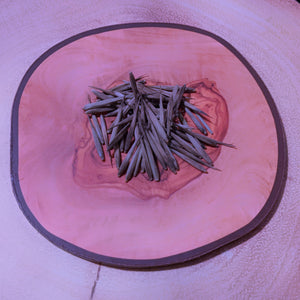

The long-term use of traditional synthetic fungicides to control the disease leads to increasing of resistance, pesticide residue and environmental pollution 8. For example, Phytophthora capsici can cause diseases in many important vegetable crops, such as pepper, eggplant, tomato, and cucumber, which is a kind of devastating disease 6, 7. Other plant diseases mentioned in this study seriously affect the yield and quality of fruits and vegetables. However, the widespread use of synthetic pesticides has resulted in adverse effects for both wildlife and humans, in addition, the influence of environmental and agricultural product pollution, ecological imbalance, food safety, including residue, resistance and resurgence are also serious problems 4, 5.

Synthetic pesticides have made an important contribution to global agricultural production, and without pesticides, the yields of crops will be reduced by more than 30% 3. The occurrence of plant diseases reduces crops including vegetables and fruits production, and affects quality directly 1, 2. Plant disease is a major factor constraining many aspects of the sustainable development of agriculture. Taken together, our findings illustrated that bamboo leaf extract could be developed and utilized as a botanical fungicide or fungicide adjuvant.

These data provided a better understanding of the anti-fungal activity and relevant active component of moso bamboo leaf extract.
Moso bamboo phyllostachys pubescens trial#
Moreover, a field trial about this formulation was assayed to control pepper phytophthora blight, with the control effect of 85.60%. Then, the extract was formulated as a 10% emulsion in water, which was stable and had no acute toxic effects. Compound 2 was isolated and identified as the main active component, with the EC 50 value of 11.02 mg L −1. The extract showed good synergistic effects with carbendazim at the ratios of 9:1 and 15:1 (extract : carbendazim), and the co-toxicity coefficients were 124.4 and 139.95. Anti-fungal activity was different by the difference of samples picking time and location. The extract of moso bamboo leaf showed good anti-fungal activity to Phytophthora capsici, Fusarium graminearum, Valsa mali Miyabe et Yamada, Botryosphaeria dothidea, Venturia nashicola, and Botrytis cinerea Pers, with inhibitory rate of 100.00%, 75.12%, 60.66%, 57.24%, 44.62%, and 30.16%, respectively. Moso bamboo ( Phyllostachys pubescens, Gramineae) is a well-known medicinal and edible plant found in China with various bioactivities, but few systematic studies address the utilization of its anti-fungal activity.


 0 kommentar(er)
0 kommentar(er)
